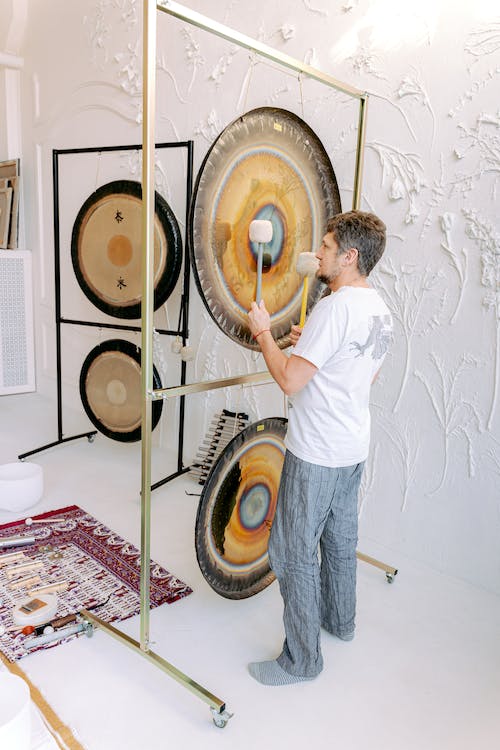A gong is a musical instrument with a shape of a circular metal bronze disc. This percussion instrument is struck using mallets. The mallets are tended to be felted mallets that are traditionally made out of wood with a bulbous tip. It can also be struck using the drumsticks, although this produces a less resonant sound. Also, it is a crucial instrument in the traditional music of East and Southeastern Asian countries. Aside from being a popular instrument in Asian countries, the gong has also been a part of Western cultural music since the 1700s.
Most likely, the gongs originated in Tibet during the Bronze Age. However, archeologists have unearthed ancient gongs in present-day Indonesia, Burma, China, and in some regions of Vietnam. The word or term ‘gong’ actually came from an Indonesian word, and this type of instrument is expected in the gamelan ensemble in Java or Bali, Indonesia. As well as that, the use of the gong in Southeast Asia and East Asia remains strong today. It is prominently featured in traditional Filipino, Chinese, Japanese, Thai, Tibetan, Korean, Vietnamese, and Burmese music ensembles.
During the 18th century, gongs have attracted the attention of European classical composers. One of them was François Joseph Gossec, the first composer to include a gong in his Western symphonic music. It was in the year 1791 funeral march of the Count Mirabeau, where Gossec had included a tam-tam or suspended gong, also known as Chinese gong or Chau gong. Aside from Gossec, other classical composers like Richard Wagner, Hector Berlioz, and Peter Ilyich Tchaikovsky have incorporated the gong instrument into the symphony orchestras. Nowadays, the tam-tam is also referred to as the symphonic gong. It also becomes a standard part of the percussion sections in Western orchestras.
As it was mentioned, these types of instruments were made out of Bronze material that is used to manufacture Chinese, Balinese, Sundanese, Malay, and Javanese gongs. Afterward, the bronze material was then forged into metal discs. However, sometimes, brass and other copper-based alloys are also commonly used to produce other metal idiophones like tubular bells and chimes. Interestingly, there are also different types of gongs. It falls into several basic categories and has a unique construction.
Suspended Gongs
Suspended gongs are flat circular gongs that have a hole near the top of their outer circumference. It has a cord that runs through these holes and attaches the instrument to a frame, where it was suspended. When the player, known as the percussionist, strikes the gong using a mallet, it will then produce an indefinite pitch much like the cymbal. There are some examples of the suspended gongs, and these were the tam-tam gongs, the Sheng Kwong gong, the Chinese opera gong, the wind gong or the Feng gong, the Pasi gong, and the tiger gong. Additionally, these suspended gongs are the type of gongs that is most commonly used as an orchestral instrument.
Nipple Gongs
Nipple gongs, or also known as the bossed gongs, featured a raised boss or knob right in the middle of the metal disc. As well as that, the nipple gong is prominent in the kulintang, a traditional ensemble known in the Philippines music genre. Moreover, the nipple gongs can be found in Buddhist temples all throughout the world since gong-making had remained to be a sacred part of Buddhist culture.
Sculptural Gongs
Sculptural gongs are gongs that serve as the dual-purpose gong for it is deemed as a work of visual art and also a musical instrument. Unlike the other gongs, the sculptural gongs are generally not disc in shape, and it takes a more complex and abstract forms and designs. This type of gong was pioneered way back in the 1990s by Steve Hubback, a Welsh percussionist.
Bowl Gongs
Bowl gongs are musical instruments that are also known as the singing bowl. As its name suggests, the bowl gongs are shaped like small bowls. In playing the bowl gong, it must be sat on a cushion and can either be rubbed or struck. Unlike the other types of gongs, the suspended gong, and the nipple gong, the bowl gong does not produce the traditional un-pitched gong sound. Instead, they create a sound similar to a bell.

